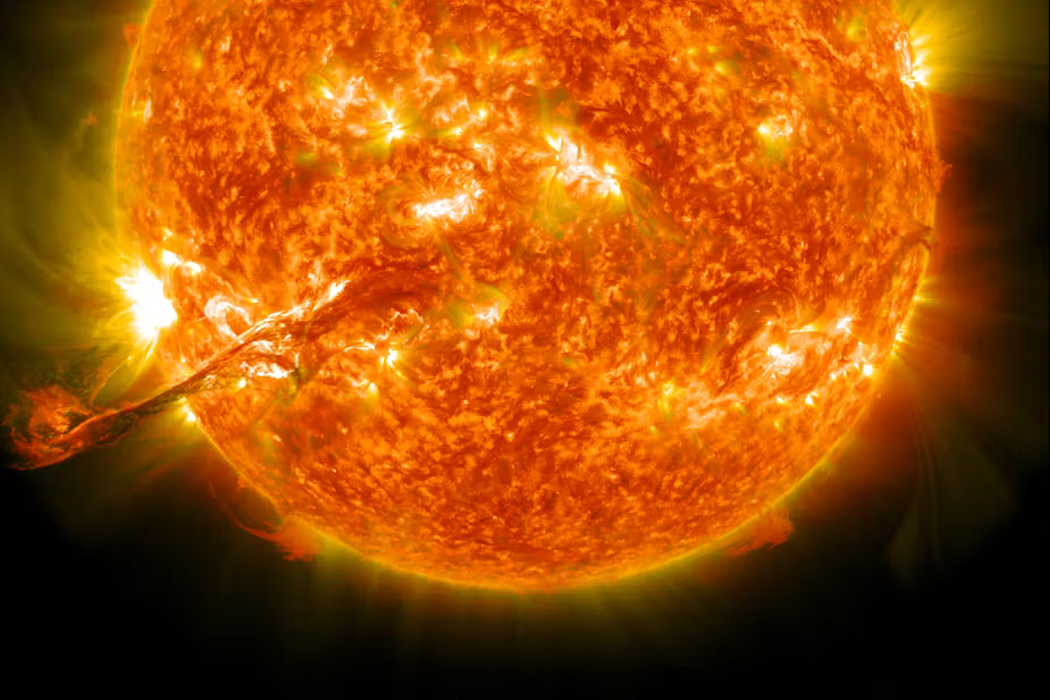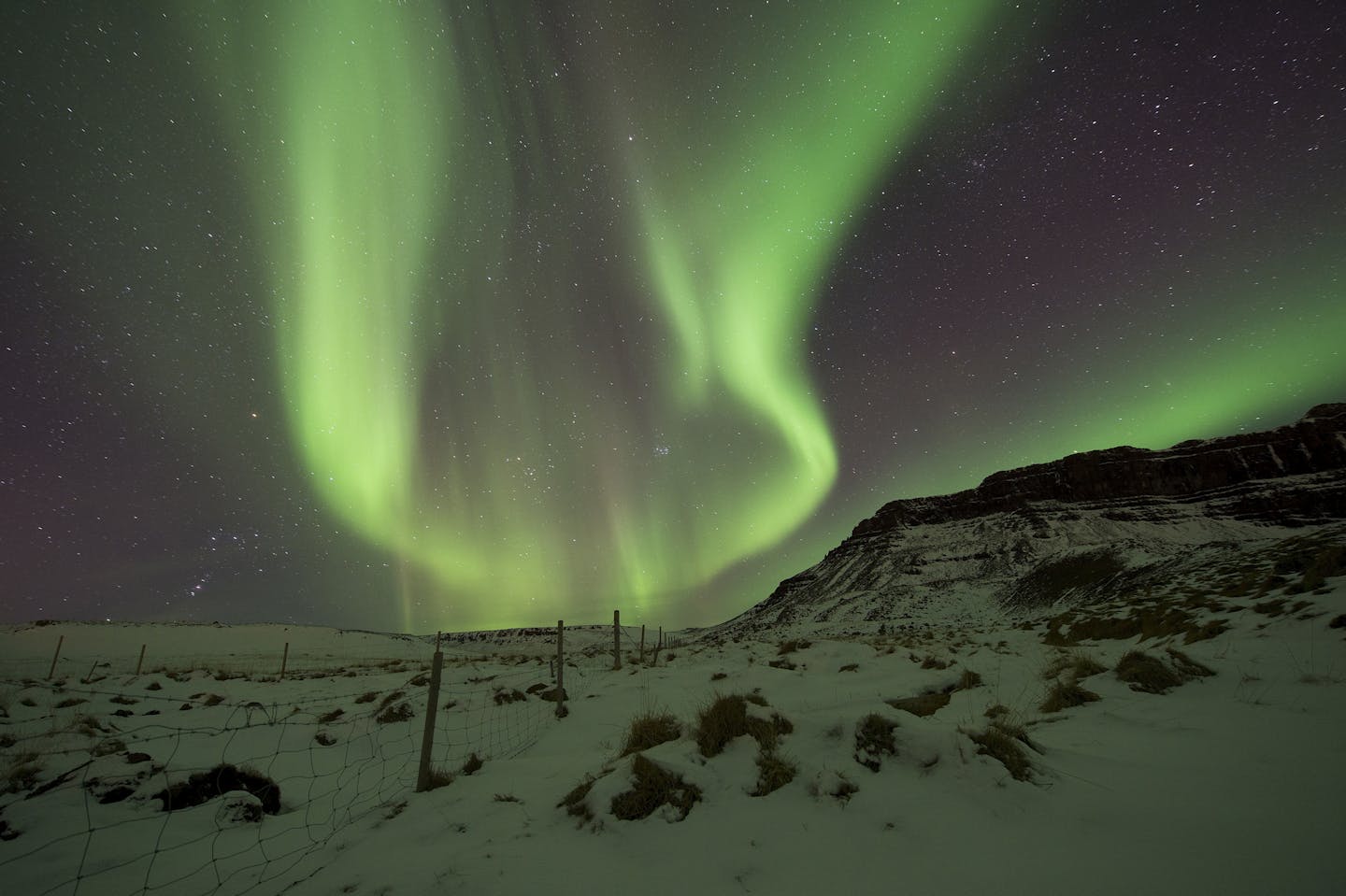
Curious Kids is a series for children of all ages. If you have a question you’d like an expert to answer, send it to curiouskidsus@theconversation.com.
What is meant by solar storm and solar wind? – Nihal, age 11, Amalapuram, India
Every day on Earth, you experience weather. You feel the wind blowing and see clouds move across the sky. Sometimes there are storms where the wind gets really strong, it might rain, or there might be thunder and lightning.
Did you know that there’s weather in space too? It all starts with the Sun.
The Sun: The bright star in our solar system
The Sun is a very hot, very big ball of gas at the center of our solar system. Its surface can reach a blistering 10,800 degrees Fahrenheit (6,000 degrees Celsius). That’s nearly five times hotter than lava that spews from volcanoes on Earth, and just like lava, the Sun glows from the heat.
The Sun is made up of what solar physicists like us call plasma.
Normal gases, like the air you breathe on Earth, are made up of atoms bouncing around. Atoms consist of a positively charged bundle of particles called the nucleus and negatively charged particles called electrons. The nucleus and the electrons are tightly stuck together so that atoms are overall neutral – that is, they have no charge.
A gas becomes a plasma when the atoms it’s made of become so hot that their negatively charged electrons split apart from their positively charged nuclei. Now that the charged particles are separated from each other, the plasma can conduct electricity, and magnetic fields may pull the plasma or push it away.
Solar wind blows out of the Sun all the time
Sometimes, the Moon lines up with Sun, blocking it from view and turning the sky dark. This phenomenon is called a total solar eclipse. During an eclipse, you can see faint, wispy structures surrounding the Moon that extend across the sky. In that moment, what you are seeing is the Sun’s atmosphere: the corona.
The corona can reach millions of degrees, which is much hotter than the Sun’s surface. In fact, the corona is so hot that the particles shoot out of the Sun, escaping from the Sun’s gravity, engulfing the entire solar system. This stream of plasma is called the solar wind.
The solar wind’s invisible, continuous gust of plasma fills a bubble in space that extends far beyond the orbit of Pluto. It can reach up to 2 million miles per hour (3 million kilometers per hour) – at that speed, the solar wind would take less than a minute to circle the Earth. For comparison, the International Space Station takes 90 minutes to go around the Earth.
While it’s hard to see the solar wind directly in photos once it leaves the corona, we can measure the gas directly with instruments in space. Scientists have recently gotten up close and personal with it by sending missions such as the Parker Solar Probe closer to the Sun than ever before. The Parker Solar Probe flies directly into the solar wind and measures the gas directly just as it escapes the Sun – like a weather station.
The Parker Solar Probe also has a specialized camera that points sideways to see the Sun’s light as it scatters off the solar wind. Light scattering is the same process that makes the sky blue on Earth.
Big solar explosions
The solar wind surrounds and engulfs the Earth and other planets all the time, but most of the time it is safely guided around us by our planet’s magnetic field. However, occasionally the Sun also generates huge explosions that release big clouds of plasma into our solar system, some of which are directed toward Earth. These massive events are called coronal mass ejections.
Compared to the solar wind, which is always blowing, coronal mass ejections are short-lived but extreme. You can think of them as solar storms. Solar storms also involve one important force that doesn’t really play a role in the weather on Earth: magnetism.
The Sun is like a giant magnet. All magnets create what we call magnetic field lines, which are lines along which charged particles such as plasma have an easy time traveling. The Sun’s magnetic field lines can be very twisted, and the solar wind and coronal mass ejections deform and drag them outward from the Sun.
When these solar storms reach Earth, their coiled magnetic fields can sometimes interact with our planet’s own magnetic field and cause disturbances called space weather.
Space weather is caused by the Sun
The Earth has a magnetic field and a protective bubble: the magnetosphere. The magnetosphere shields us from the Sun’s solar wind and solar storms, acting like a force field to keep living things safe from the energetic particles released by the Sun.
Most of the time this protective bubble works so well that you can’t tell that there is anything special happening out in space. During particularly big storms, however, some solar wind plasma can make it down into the Earth’s atmosphere. As coronal mass ejections pass over Earth, their magnetic field can interact with Earth’s magnetic field. The Sun and Earth’s magnetic field lines untangle and rearrange, and for a short while these fields can link together and let the Sun’s plasma in.
When this happens, it can cause big magnetic storms all over the world. This interaction between ejections from the Sun and the Earth is what scientists refer to as space weather.

Space weather is just like the weather on Earth, generated by its atmosphere. It is important for scientists to understand and predict this space weather, as it can lead to power blackouts, interrupt communication and even cause satellites to prematurely fall down to Earth.
Besides these dangers though, space weather can create beautiful light shows in the sky called Northern Lights, or aurora borealis, and Southern Lights, or aurora australis. You can observe these if you’re near the North or South Poles. If you ever get a chance to see them, remember what you’re seeing is space weather, the result of eruptions and solar wind from the Sun.
Hello, curious kids! Do you have a question you’d like an expert to answer? Ask an adult to send your question to CuriousKidsUS@theconversation.com. Please tell us your name, age and the city where you live.
And since curiosity has no age limit – adults, let us know what you’re wondering, too. We won’t be able to answer every question, but we will do our best.
This article is republished from The Conversation, a nonprofit, independent news organization bringing you facts and trustworthy analysis to help you make sense of our complex world. It was written by: Yeimy J. Rivera, Smithsonian Institution; Rosa Tatiana Niembro Hernández, Smithsonian Institution, and Samuel Badman, Smithsonian Institution
Read more:
- Solar storms can destroy satellites with ease – a space weather expert explains the science
- Solar storm knocks out farmers’ high-tech tractors – an electrical engineer explains how a larger storm could take down the power grid and the internet
- Space weather forecasting needs an upgrade to protect future Artemis astronauts
Yeimy J. Rivera receives funding from NASA's Parker Solar Probe project through the SAO/SWEAP subcontract 975569.
Tatiana Niembro receives funding from NASA's Parker Solar Probe project through the SAO/SWEAP subcontract 975569 and the LWS grant number 80NSSC23K0897.
Samuel Badman receives funding from NASA's Parker Solar Probe project through the SAO/SWEAP subcontract 975569.


 The Conversation
The Conversation
 St. Louis Post-Dispatch
St. Louis Post-Dispatch Election Law Blog
Election Law Blog Raw Story
Raw Story The Daily Beast
The Daily Beast FOX 13 Tampa Bay Crime
FOX 13 Tampa Bay Crime Go Fug Yourself
Go Fug Yourself